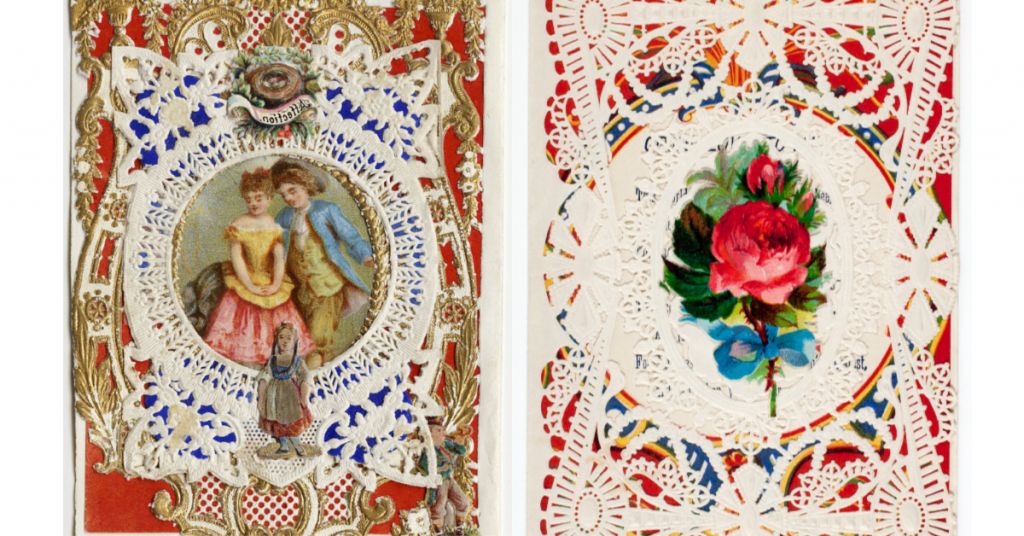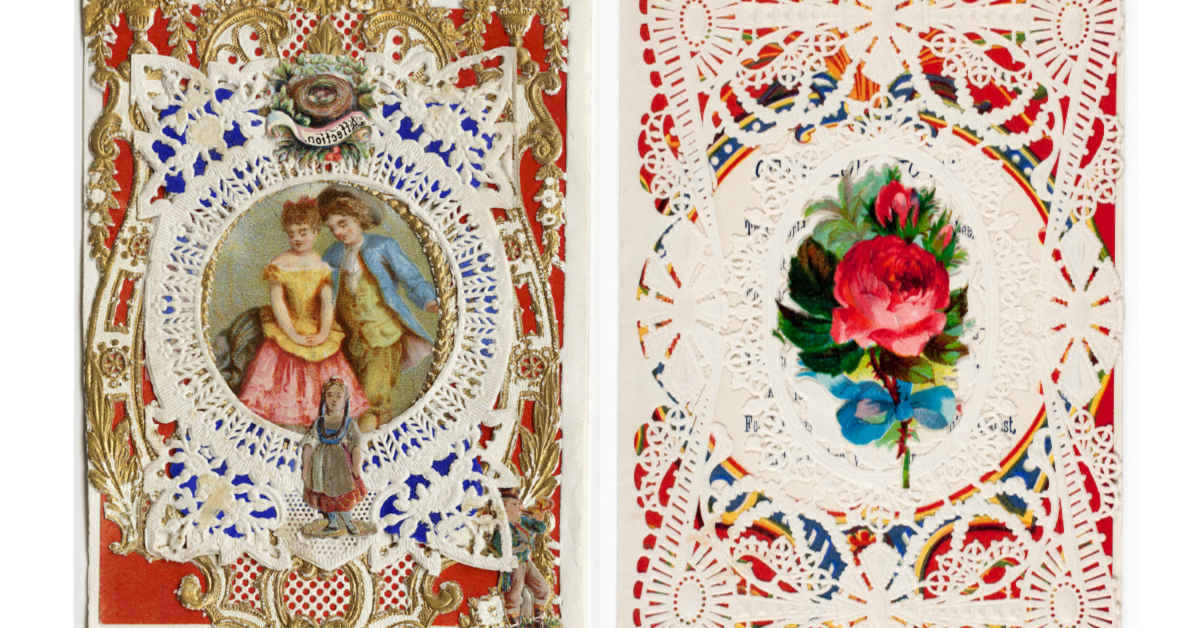In photographs, she presents the grim, humorless visage of a middle-aged, Victorian spinster. But Esther Howland popularized valentine giving in the United States and, by the time of her death in 1904, had earned the sobriquet “Mother of the American Valentine.” (This article was first published in Uncle John’s Bathroom Reader Book of Love.)
Be My Valentine?
Esther was born in 1828 in Worcester, Massachusetts, the daughter of a successful businessman, Samuel E. Howland, who owned a book and stationery store. When Esther graduated from Mount Holyoke College in 1847, one of her father’s business acquaintances mailed her a valentine from England. Such greeting cards were popular in Europe, where they were mass-produced. But Americans, having no such products available, usually made their own simple greeting cards because the imported English cards were expensive.
Charmed by the concoction of paper lace and cutout flowers, Esther decided to try to imitate it. She asked her father to buy lace, colored paper, and other trimmings and then proceeded to design 10 different valentines with her supplies. When she finished, she asked one of her salesman brothers to show her designs to his business contacts throughout New England. She hoped to sell her valentines for 50 cents each and earn a few hundred dollars. Her brother returned with requests for 10,000 cards—an order that amounted to $5,000!
A Lovely Business
Unable to produce so many valentines by herself, Esther took over a room in her family’s home and persuaded some of her friends to help her. Together, they created one of the first (though unofficial) assembly lines in the United States: One woman made the backgrounds—fancy curlicues, leaves, or landscapes. A second cut out pictures to be layered on lace paper. A third pasted on flowers or bits of silk and satin. Esther examined and approved every card.
Those 10,000 cards were just the beginning. Esther fulfilled her initial orders by 1849, and by the end of the next year, the amount had doubled. Her business took over the whole third floor of her father’s home and then required even more space. So, in the 1860s, Esther rented a nearby building to house her operation and named her business the New England Valentine Company. She was also making about $100,000 per year.
For the next 20 years, she continued to create the cards. She had designs to fit every pocketbook. The cheapest and most simple were usually two-dimensional and sold for 5 cents. But the most complex (valentines with lift-up windows, 3-D shadow-box scenes, and pleated layers) could cost as much as $50. She used crushed colored glass to create a sparkling effect and even made cards with tiny envelopes in which the giver could hide sweet sentiments for his beloved. Esther also published a book of valentine “mottoes,” or verses, so that senders could choose their own messages.
In 1881, Esther retired and sold her business. The buyer, George Whitney, had a large card company of his own and was one of the first to manufacture card-making supplies in the United States. But by that time, Esther had transformed valentine giving from a luxury of the upper classes to something everyone could do.
Endless Love
The cards Esther made are sought-after collectibles today. They are hard to find, though, and the most elaborate ones can cost several hundred dollars. Some identifying marks reflecting different periods in her business include a red “H” sticker, a printed red “H,” or an embossed “NEV Co.” (for New England Valentine Company). The Mount Holyoke College Archives and Special Collections owns two original Howland valentines. And the Elmhurst Historical Museum in Illinois boasts a large valentine archive that includes Esther Howland cards.
To recognize Esther’s contributions to the Valentine’s Day card, the Greeting Card Association (the international organization of greeting card and stationery publishers) established the Esther Howland Award in 2001. Each year, this award goes to an individual whom the association recognizes as a creative visionary in the industry. The first recipient was Marian Heath, aged 95, who established Marian Heath Greeting Cards during the 1940s. The company is still in business.
Hey, Lover Boy . . .
Not everyone in Esther Howland’s day appreciated sweet, loverly valentines. For some, flowery sentiments were more than they could stomach. These folks came up with the “penny dreadful” or “vinegar valentine.” A cheap, insulting card first introduced in 1858, vinegar valentines cost one cent and were usually sent anonymously. What might one say? Things like . . .
- “Hey, Lover Boy, the place for you is home upon the shelf, ’cause the only one who’d kiss you is . . . a jackass like yourself!”
- “You’re a grafter, a grabber and bully, the biggest one in all the town, but when it comes to school work—you are a dunce of great renown.”
- “You try to do all that is the rage, although you’re fat and carry weight for age. If you would do as we advise, you’d act more consistently with your size.”









